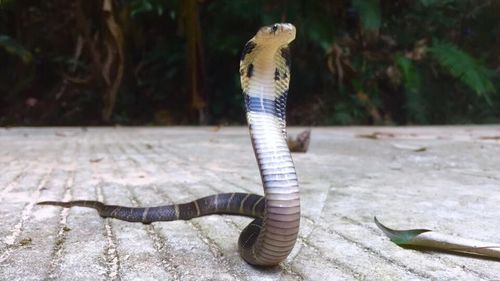
Chinese Cobra
The Chinese cobra, Naja atra, is renowned for its striking hood and potent venom. Found across diverse terrains in Asia, it plays a vital ecological role by regulating pest populations, showcasing the delicate balance between power and necessity in nature.
12 years
Lifespan
Length: 2.01 m
Size
Brown, Grey, Black
Color
High
Aggression
Vulnerable
Conservation Status
Decreasing
Population Trend
Characteristics
The Chinese cobra (Naja atra) is a venomous snake found in southern China, Taiwan, and northern Vietnam. It thrives in a variety of habitats including forests, grasslands, and agricultural areas. Notable for its hood flare when threatened, it plays a crucial role in controlling rodent populations.
Distribution Range of the Chinese Cobra
Naja atra, commonly known as the Chinese cobra, is native to East Asia. Its geographical distribution includes southern China, Hong Kong, northern Vietnam, and Taiwan. It is also found in some parts of Laos and northern Myanmar.
Chinese Cobra's Habitat
Environmental Conditions
The Chinese cobra typically inhabits a variety of environments ranging from lowland regions to mountainous areas up to 1,800 meters in elevation. It is often found in open woodlands, grasslands, shrublands, and agricultural fields. The climate in these areas is generally subtropical to tropical, with warm temperatures and moderate to high humidity levels.
Ecological Niche
Naja atra is a terrestrial and semi-arboreal snake, often found near water sources such as rivers and streams. It plays a role as both predator and prey within its ecosystem, primarily feeding on small mammals, birds, frogs, and other reptiles. The species is known for its adaptability to human-modified environments, often being found near villages and farms, which can sometimes lead to human-wildlife conflict.
Copyright @ Nature Style Limited. All Rights Reserved.
 English
English